I bounced around Italian kitchens for years and I picked up a few tricks and special dishes. Cappellini alla Checca with Wild Mushrooms is a contender for my all-time favorite pasta dishes.
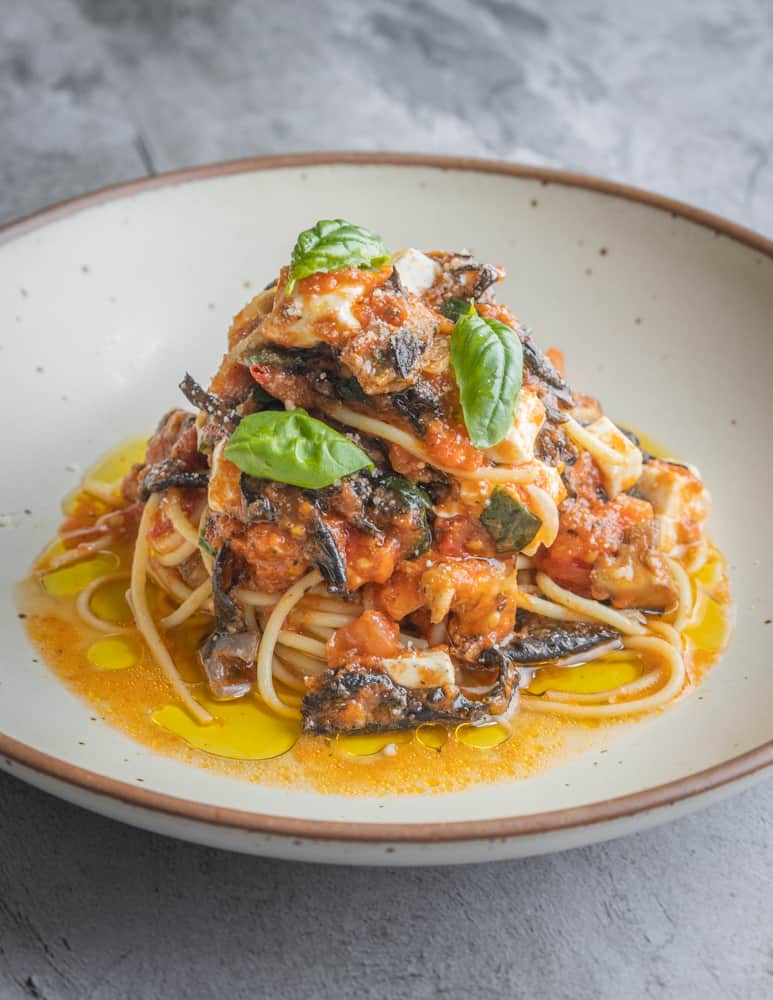
This capellini pasta alla checca recipe was on the menu at Trattoria Da Vinci where I learned to make it from Chef Angelo Volpicelli. Angelo was from Lazio, so he specialized in Roman cuisine where this recipe comes from. It wasn't just the guests who liked it though, it was also the staff favorite.
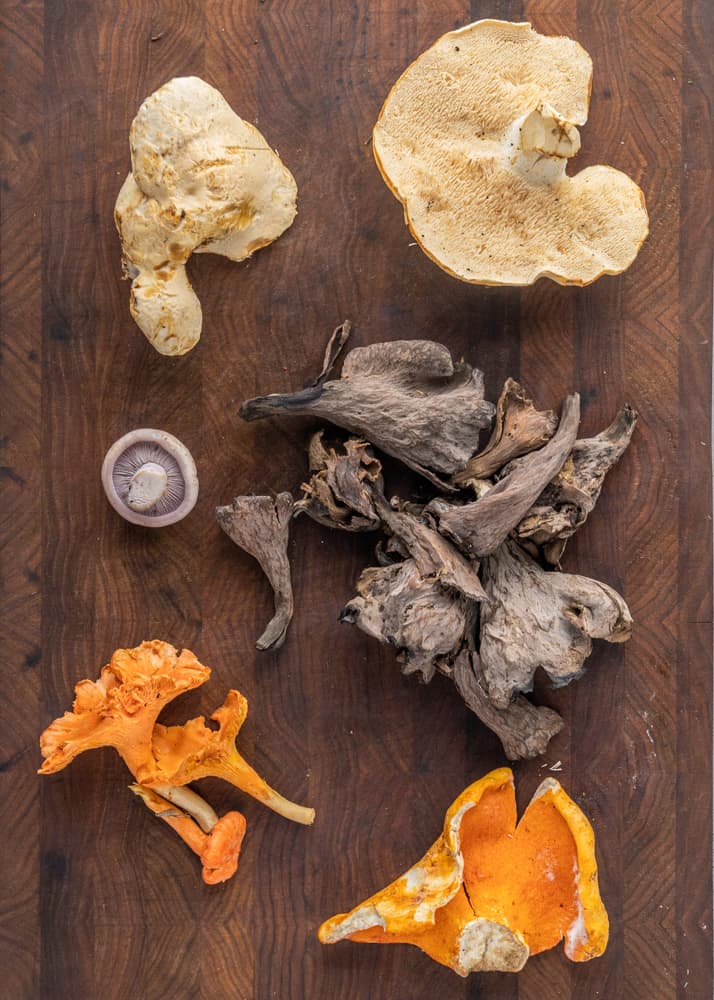
After we made pastas for the staff, we'd make food for ourselves, and I'd wager I ate a bowl of checca at least twice a week.
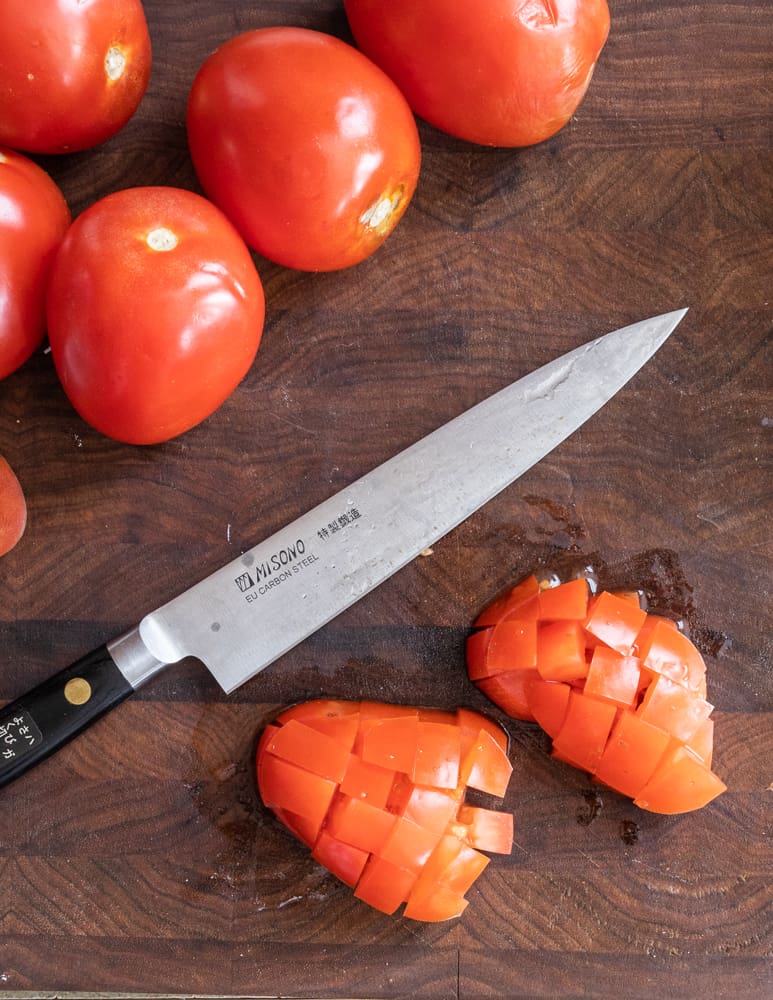
How to Make it
At the end of the day this is nothing more than thin noodles in the style of a spaghetti pomodoro. The dried pasta's dressed with a simple sauce of diced ripe tomatoes or cherry tomatoes, garlic, tomato sauce, basil and fresh mozzarella.
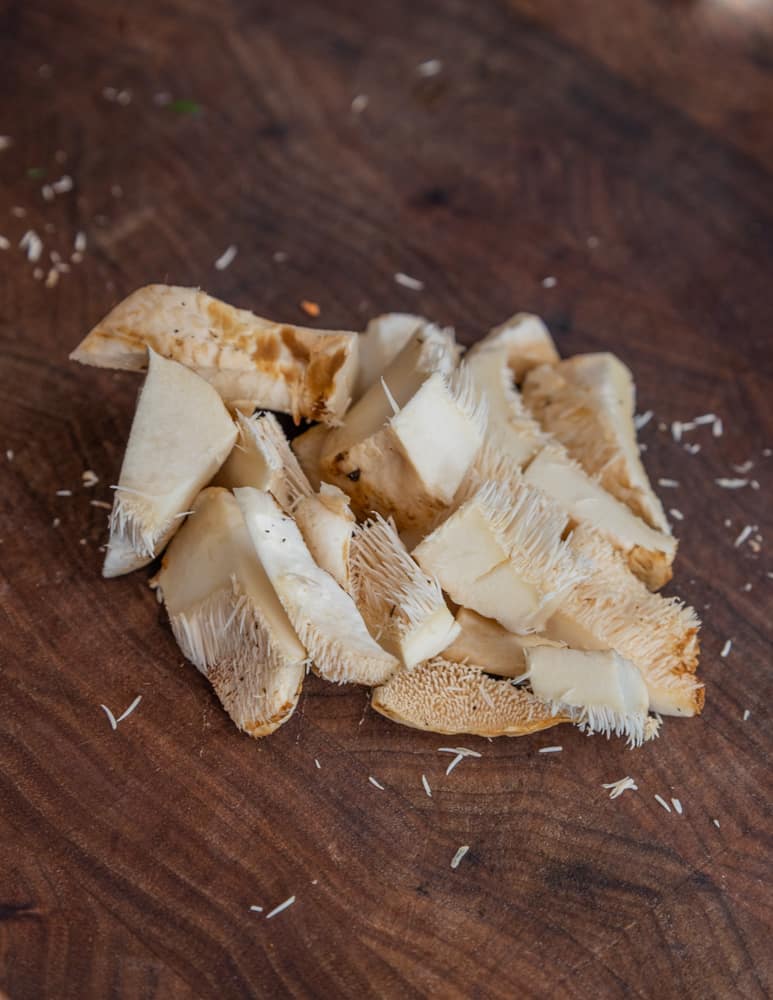
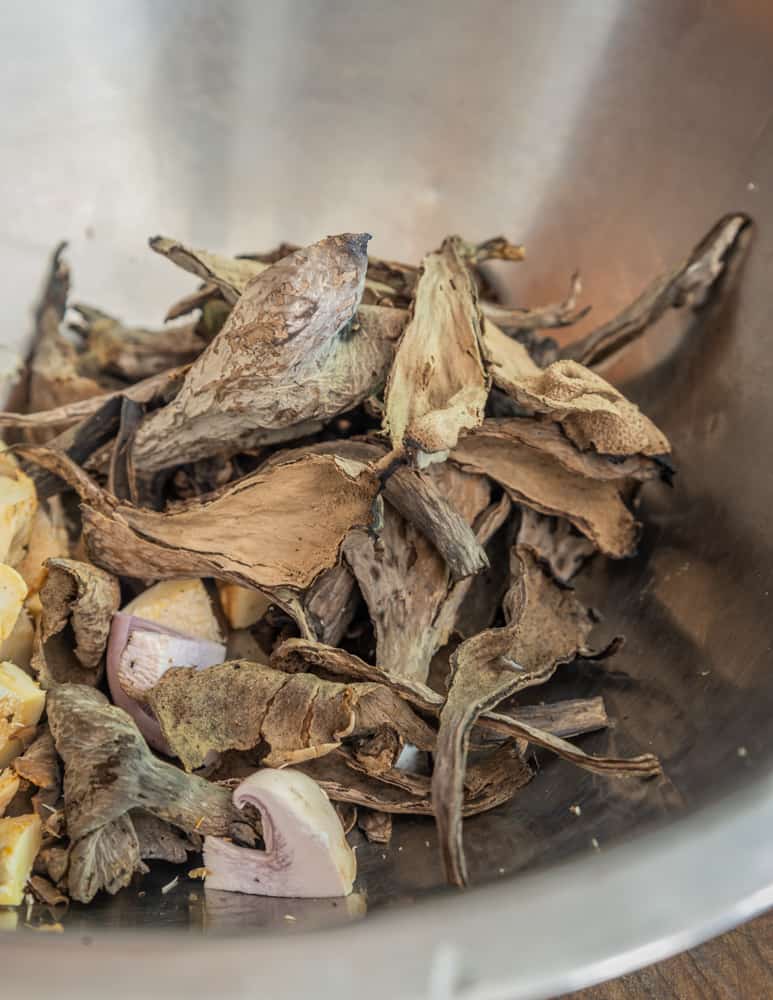
There were add-ons too. Toss in some shrimp, a handful of rendered pancetta nuggets, or, my favorite: a spoonful of a juicy mushroom ragu scented with dried porcini.
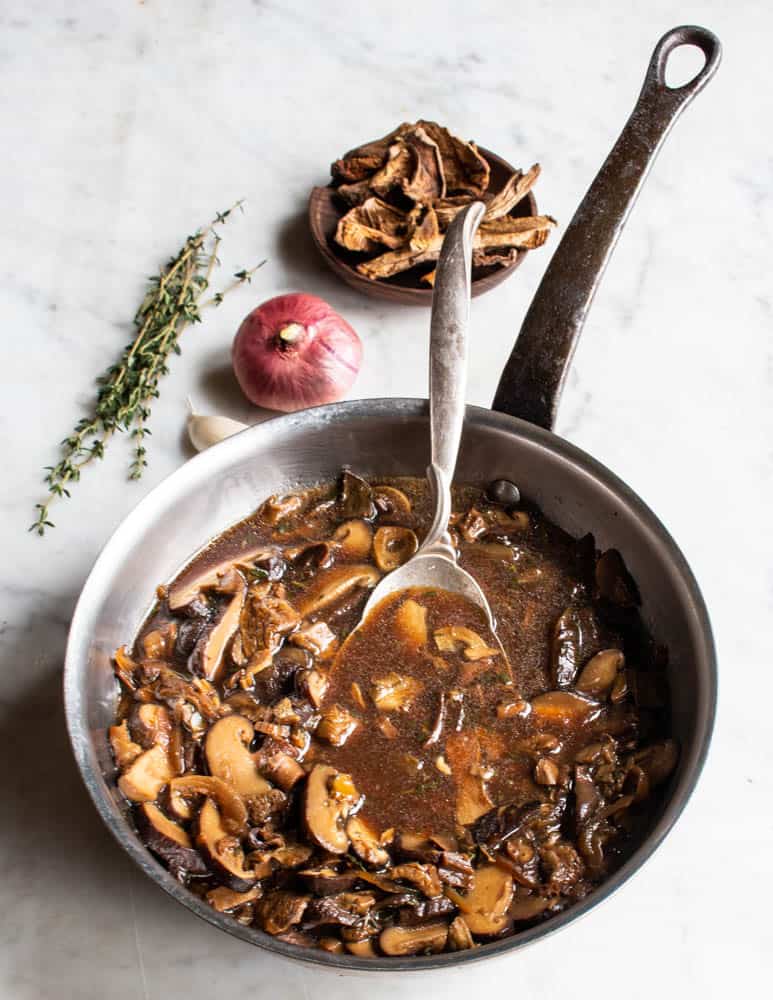
Angelos mushroom ragu is a separate thing, and was streamlined for restaurant service so I skip it here and use fresh wild mushrooms instead (if you want to try it sometime the recipe's here).
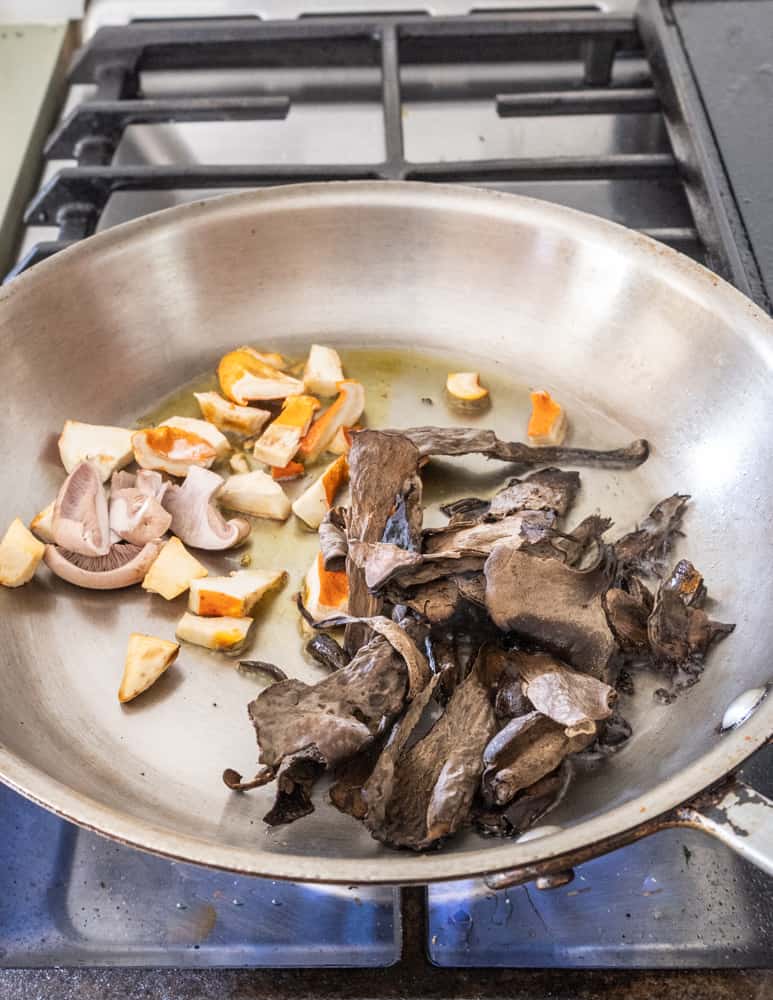
Plating
Making the dish as I describe will teach you one of the most important things about making and serving pasta at home: twirling the noodles and putting the sauce on top when you plate.
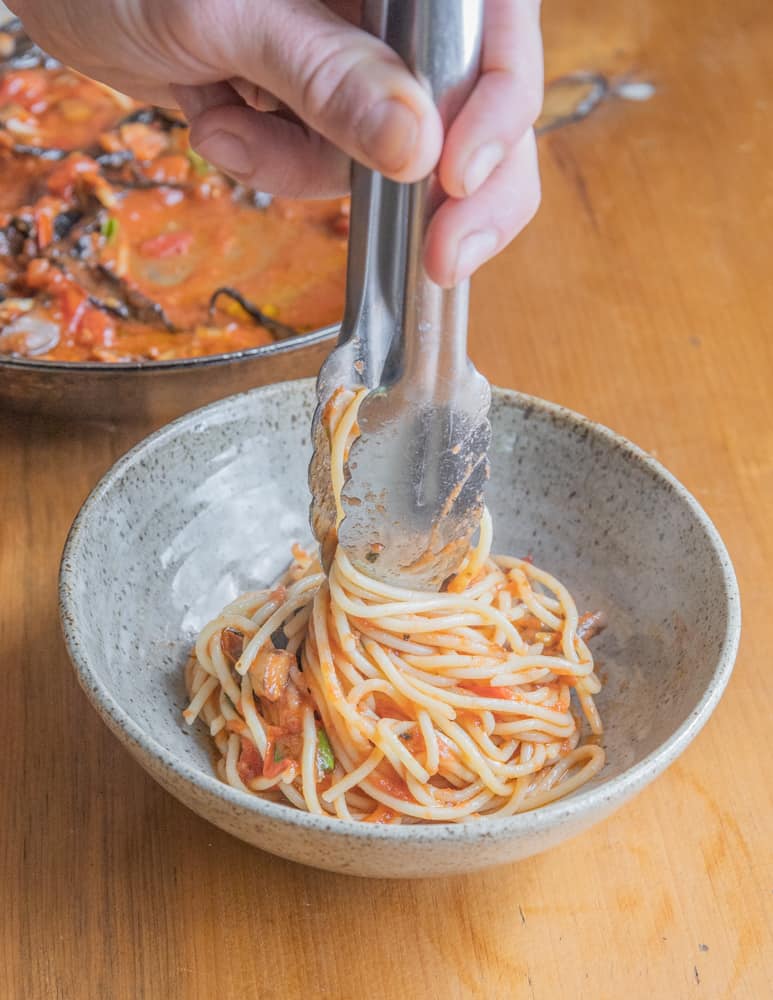
This is probably the biggest difference between how pasta is plated at a restaurant compared to how people enjoy pasta at home. Once you try it, you may never go back.
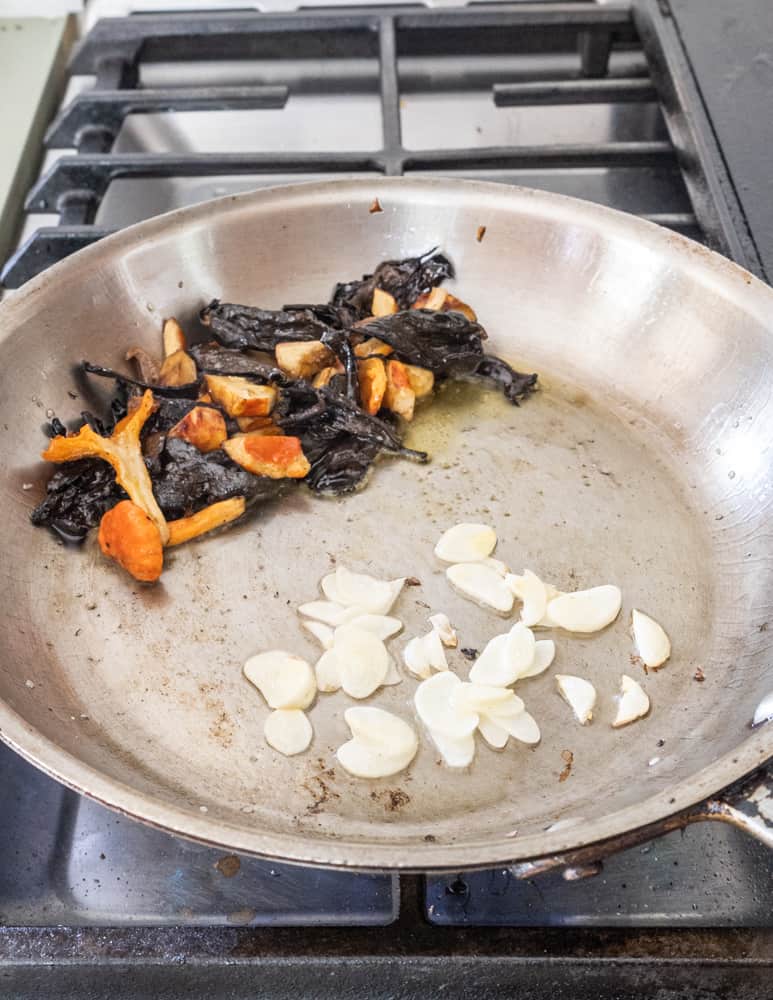
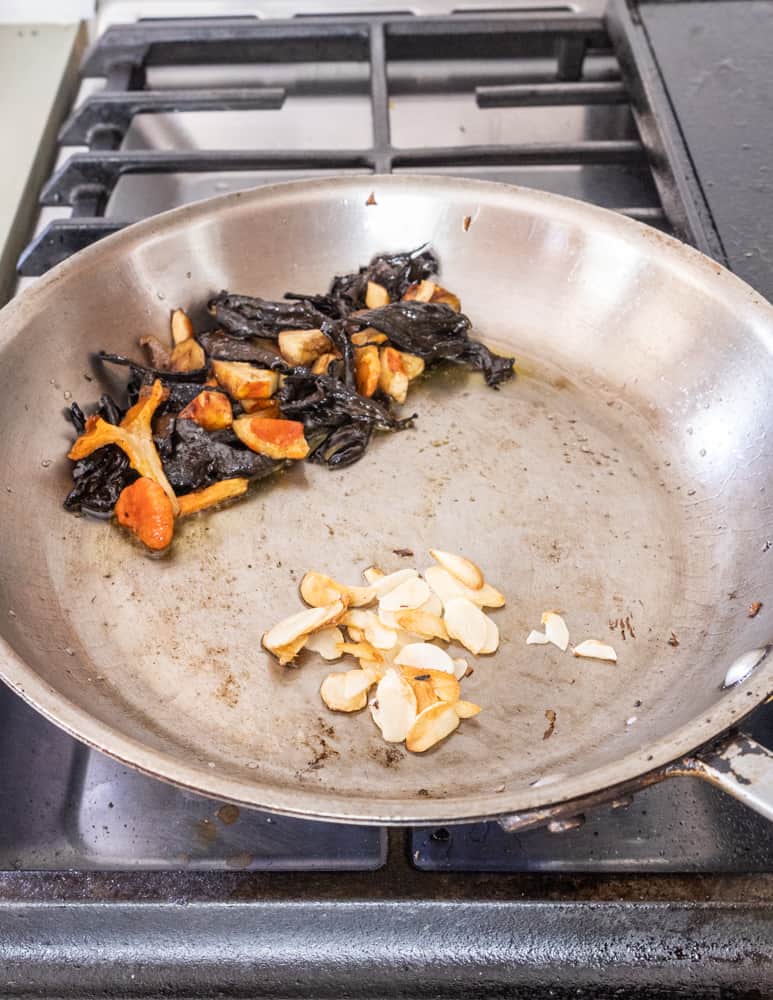
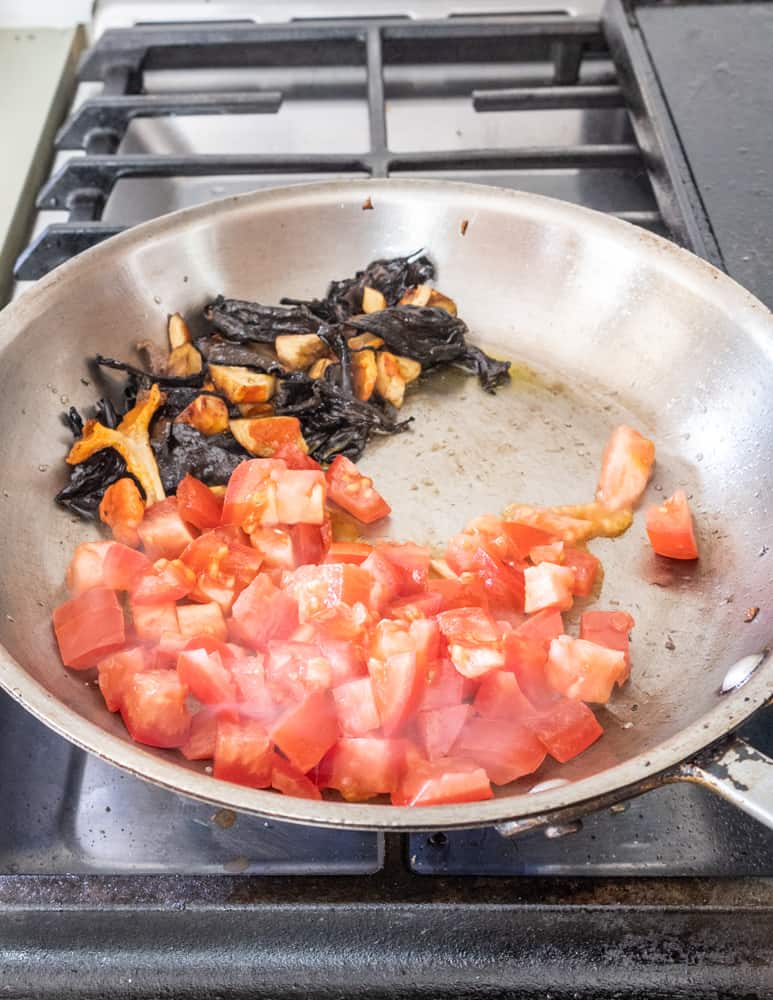
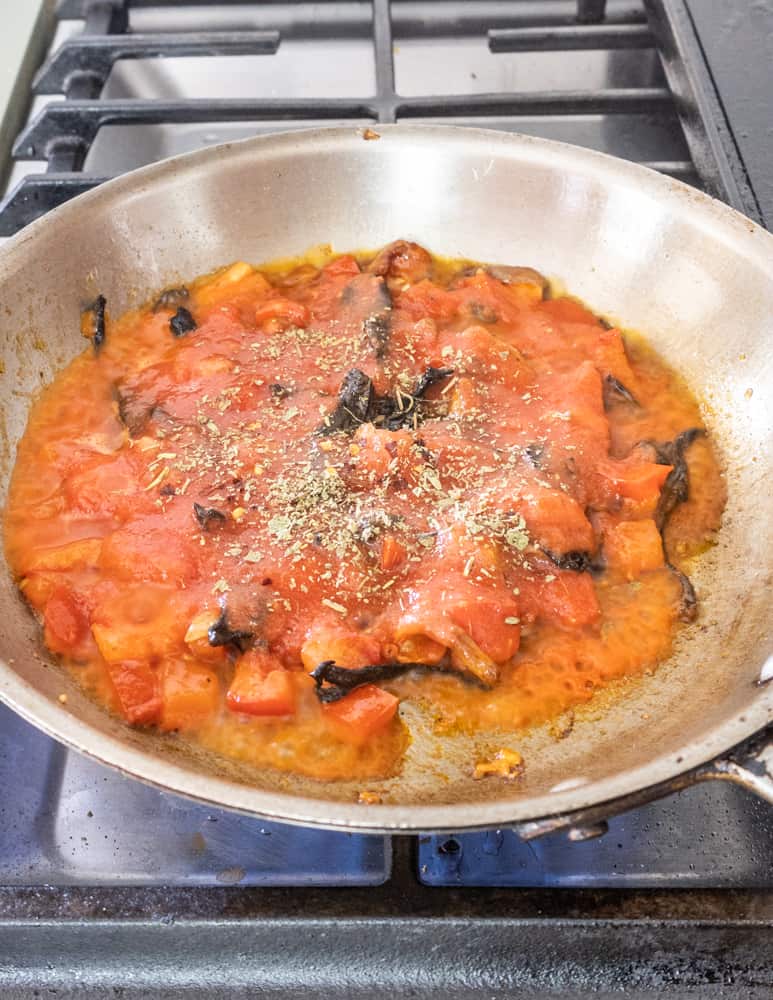
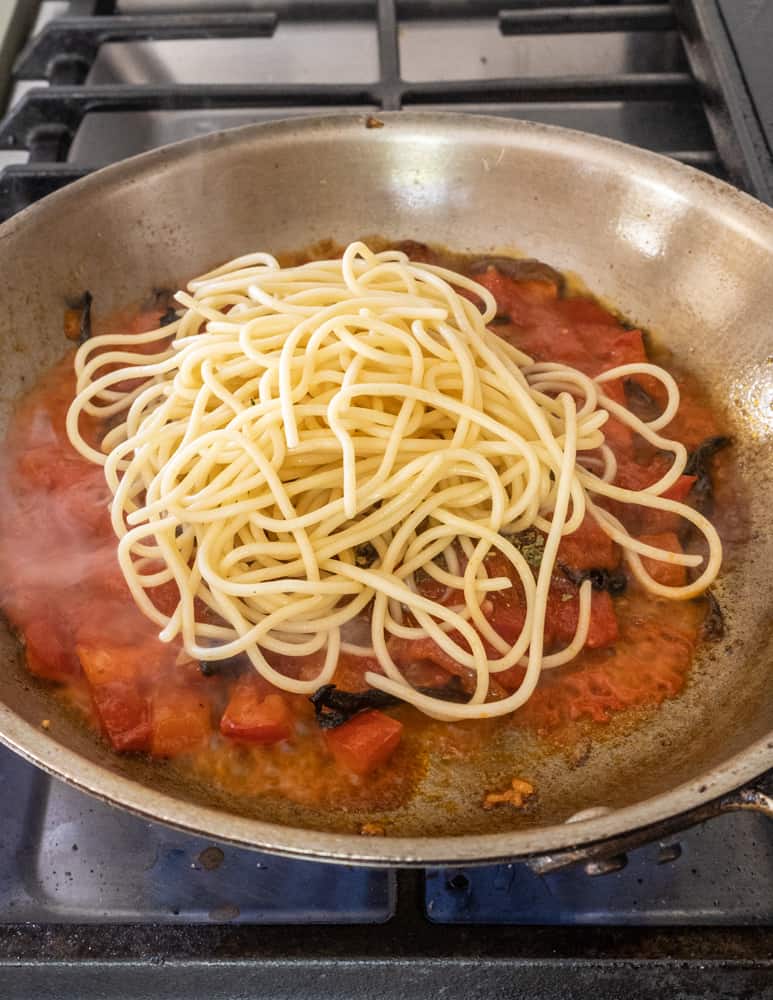

Adapting the recipe
At the restaurant we made this with capellini di angelo, or very thing angel hair. In the dish pictured here I use regular capellini, which is a little more forgiving and eats more like spaghetti.
Ideally you'll use this as a sauce for long noodles, although occasionally for buffets I think we used penne.
Related Posts
Black Trumpet Mushroom Recipes
Chanterelle and Black Trumpet Carbonara
Candied Black Trumpet Mushrooms
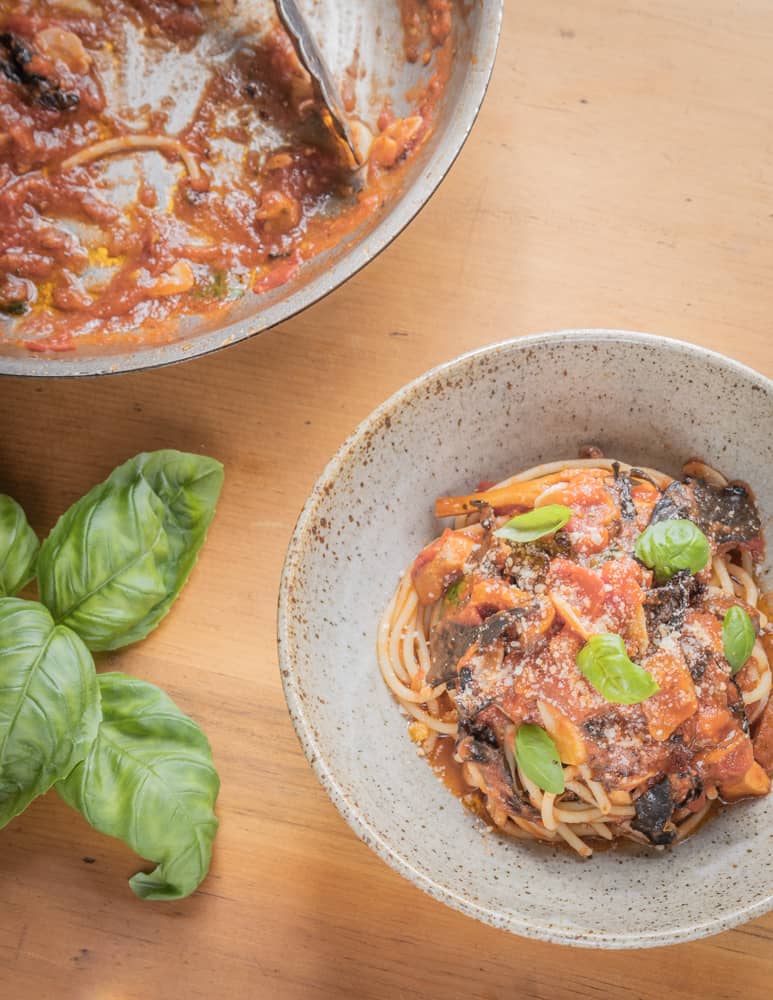
Capellini Pasta alla Checca with Mushrooms
Equipment
- 1 10 inch saute pan
- 1 Pasta pot
Ingredients
Sauce
- 1.5 tablespoons cooking oil
- 3 oz wild mushrooms preferably with some black trumpets
- ¼ teaspoon kosher salt
- 1-2 large cloves garlic thinly sliced
- Pinch of crushed red pepper flakes
- Pinch of dried oregano I use dried bee balm
- 6 oz (2 medium) roma tomatoes diced
- 6 oz ¾ cup homemade tomato sauce
Serving and finishing
- 3 large leaves of fresh basil torn
- 1 tablespoon extra virgin olive oil
- 1 oz fresh mozzarella diced
- 1 tablespoon grated parmesan
- 3 oz dried capellini, capellini di angelo, or spaghetti or 6 oz cooked pasta
Instructions
Build the sauce
- In a 10 inch saute pan, heat the cooking oil, then add the mushrooms and cook for a few minutes over high heat until wilted. Add the salt and stir.
- Push the mushrooms to the side of the pan, turn the heat to medium-low, add a drizzle of oil and the garlic. Cook the garlic slices until they’re just starting to brown around the edges, minding the heat and being careful not to burn them.
- Bring a pot of salted water to a boil, add the pasta and cook al dente.
- Add the diced tomatoes, oregano, crushed red pepper flakes, another pinch of salt, and cook for a few minutes over high heat to evaporate some of the liquid.
- Add the tomato sauce and simmer a few minutes more. Add the hot pasta, toss with the tomato mixture and heat through. Double check the seasoning for salt and pepper and adjust as needed, then toss, add the extra virgin olive oil, basil and mozzarella, remove from the heat and toss again.
- Add a splash of pasta water if the pan gets dry.
Plating
- Using tongs, twirl the pasta and remove to a preheated pasta bowl. Twirl the pasta again in the bowl to give it some height, then pour the mushroom sauce from the pan over the top. Garnish with a few basil leaves, a little more extra virgin olive oil if you want, and some grated parm. Serve hot.

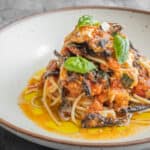
Jay
Hello Allen,
In your post of Oct. 1 '22 "Pasta alla Checca with Wild Mushrooms" you mentioned you used bee balm in place of oregano. I'm in central Texas and M. citreodora (aka Lemon Bee Balm) is prolific here. I've found it to be a delightful herb. It would make a very good oregano substitute with a je ne sais quoi and a latent mustard character in either a marinade, rub or other applications.
I'm curious what variety you used (M. didyma?) and how it may differ from M. citreodora if you're familiar?
Also, I'm curious, though it's not pressing, how mounding pasta changes the way one eats it? I usually just toss the pasta in whatever sauce and plate. Is that wrong? (I cook for one and do more grub than haute cuisine:)
I appreciate your website and posts.
Thanks
-- jay
Alan Bergo
Hi Jay, good question. I use Monarda fistulosa. M. didyma has a different flavor and I only use the flowers. I don’t know how the lemon bee balm would work-try it and let me know.
As for mounding the pasta, I worked under a number of Italian chefs and this is how it’s done. Pouring the sauce over the pasta at the end from the pan after mounding it encourages an even distribution of ingredients.
Jay
Given the 100+ heat we're having, my lemon bee balm has set or is setting seed. I'll scatter the seen in a retired garden area more convenient to the house and renew experimentation next spring.
Thanks for your information.
-- jay
Ellen Anderson
This looks great! Hopefully my trumpets are doing to show up soon so I can try. My question—would it be terrible to do this with canned plum tomatoes? Also how about using dried trumpets?
Thanks for all of your posts!
Alan Bergo
Fresh tomatoes only for this. But you can try. It's fine to use dried trumpets, but I would reserve their liquid for a different purpose as it will discolor the pasta.